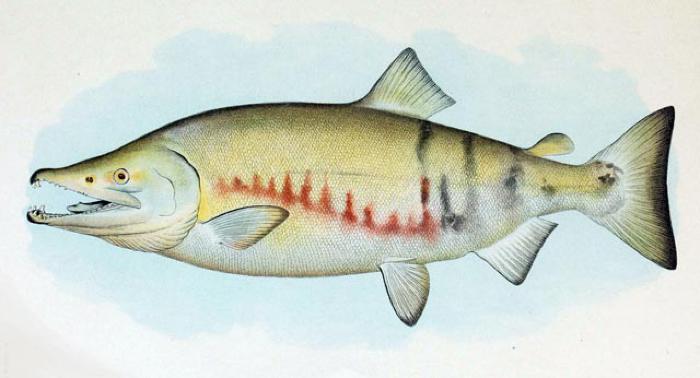Dog Salmon — Alimaq

Chum salmon, also known as dog salmon (Oncorhynchus keta), are the most widely available species of Pacific salmon. These large fish live in marine waters from southern California to the Arctic Ocean and the Sea of Japan. Chum can reach over thirty pounds, but more commonly weigh between seven and eighteen pounds.
In Kodiak waters, chum salmon are the third most abundant species of salmon. They are broadly distributed and spawn in many of the same streams as pink salmon, particularly the island’s larger watercourses. There are more than one hundred dog salmon streams around the archipelago and about 1.7 million chums return to the island each year. Like king salmon, chums may inhabit near-shore ocean waters for weeks before moving into freshwater. However, once they enter streams, they spawn rapidly, developing distinctive vertical bars of green and purple. Around Kodiak, chum salmon spawn in the greatest numbers from mid-August through early October.
Chum salmon are not as widely eaten as other varieties of salmon. Many people find their pale-colored flesh less appealing, perhaps because it contains less oil than other varieties of salmon and has a firmer texture. Some Alutiiq Elders note that they have never eaten much chum salmon, although others report that the fish is tasty when boiled and that it makes good smoked salmon. Across northern and interior Alaska, dried and smoked chum salmon has long been a staple winter food. Chum salmon are also an economically important species. Sport fishermen seek out these fish as they fight a hook energetically, and commercial fishermen prize them for their large, flavorful roe.
